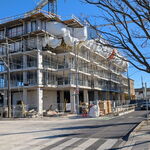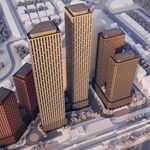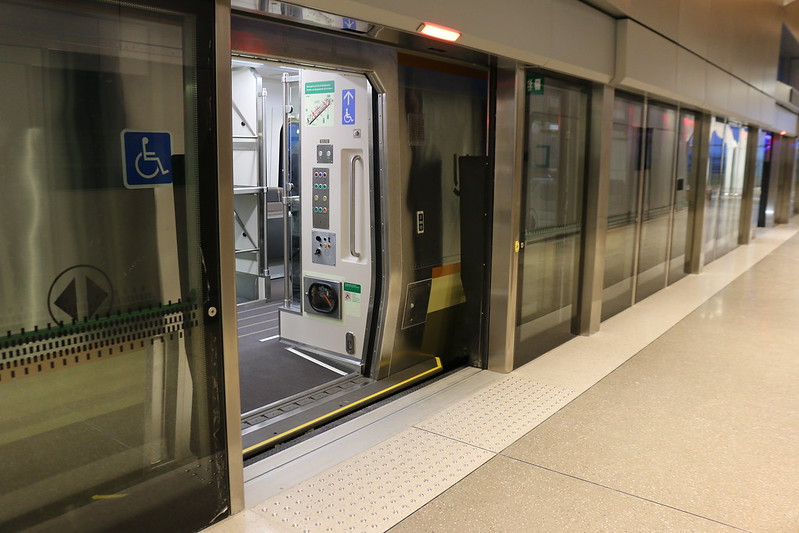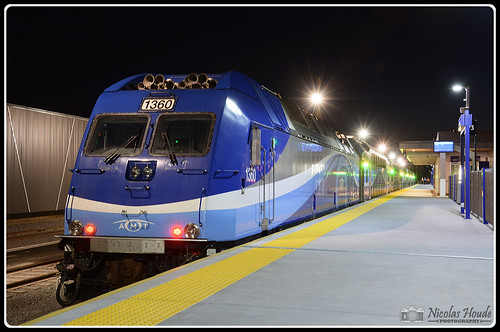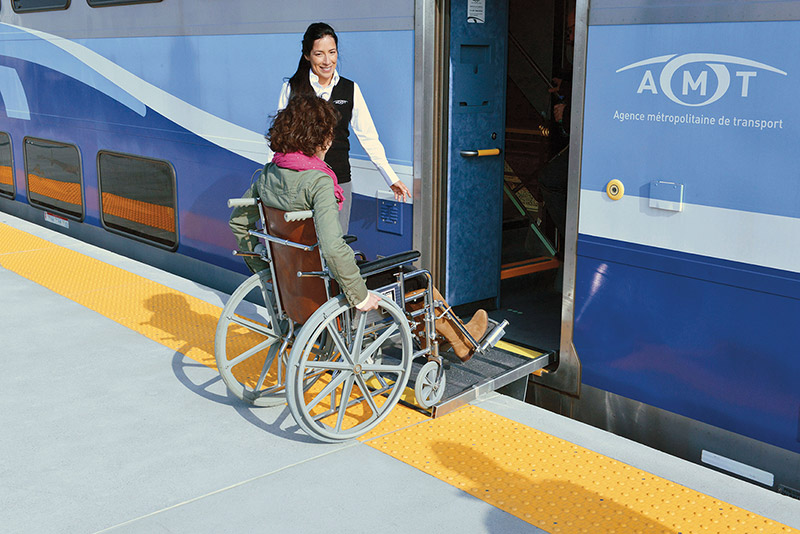mdrejhon
Senior Member
The Great Platform Height Debate (converting train stations to high platform)
Over the next ten to fifteen years, we will have lots of trains with various platform height requirements, running over the Metrolinx rail:
- GO Trains (low only, with center car high platform)
- VIA (low and high)
- GO RER (unknown)
- SmartTrack (if using different trainsets than GO RER)
- High Speed Rail (usually high only)
The biggest impact may be the GO RER / SmartTrack initiatives, some which MAY be high platform (in short: they're still deciding), and the potential need for station sharing with GO stations. Metrolinx has already proposed diversifying their trains during the upcoming GO RER boom. This will be huge challenge in station-sharing, in the coming years. Inevitably, we may need certain stations modified, or transitioned (or even all of them).
The question is no longer "if", but "when". In fact, it already happened. We already had to build a UPX station at Union that is high platform. We had to duplicate some stations for UPX. But this is nothing compared to the future explosion of train diversity. Europe had to go through this headache, as well as California with their upcoming HSR.
Various methods that are used or proposed:
- Different heights of platforms on either side of trains (see example photo below)
- Separate stations for high vs low platform trains (UPX method)
- Transitioning the trains and/or platforms (including long term slow transitions)
- Different levels of sinking of trackage within the station (tracks for high platform trains are sunk lower in the station, to keep platform at the same level as for the low platform trains in other tracks)
One example of the European solution is pictured below.
High speed train at left (high platform train in sunken track), and commuter train at right (low platform train on raised track).
Photo by Mundus Gregorius from flickr
Source: http://sf.streetsblog.org/2014/10/07/caltrain-and-high-speed-rail-to-pursue-shared-level-platforms/

But not many stations have enough land space to allow both platform heights in the same locations. So tough platform choices has to be made. California is going through this debate, with lots of interesting diagrams that are relevant to discussion. Because California are using the same bilevel trains as we are!
Source:
http://caltrain-hsr.blogspot.ca/2014/07/the-path-to-level-boarding.html

Source:
http://caltrain-hsr.blogspot.ca/2014/07/the-path-to-level-boarding.html

But that can be insanely expensive, so some systems have proposed trainsets with doors at both heights, for supporting both kinds of stations, high and low. It also permits long (50-year) transitions in station platform heights, by living with trainsets that support both. Example:
Source: http://caltrain-hsr.blogspot.ca/2014/10/level-boarding-plan-b.html

Knowledge of precedent is useful. Lots of bilevel EMUs in Europe were low level, but some of them have high level doors in theirs, so bilevel EMUs exists for both low and high platforms. So it is theoretically possible
Moscow's airport train. Peris bilevel RER is high platform too.
Source: http://caltrain-hsr.blogspot.ca/2014/11/the-train-that-shouldnt-exist.html

It is worth mentioning our GOtrains are modifiable to an extent, if we needed such a transition over time but for 25" platforms and not the UPX height of four feet.
Source: http://caltrain-hsr.blogspot.ca/2014/09/compatibility-done-backwards.html

In less than 15 years (or even 15 months!), something (HSR, RER or SmartTrack) is going to force expanded discussion about this. It possibly is not a question of "if" but "when" the big platform height debate goes public within Toronto.
Over the next ten to fifteen years, we will have lots of trains with various platform height requirements, running over the Metrolinx rail:
- GO Trains (low only, with center car high platform)
- VIA (low and high)
- GO RER (unknown)
- SmartTrack (if using different trainsets than GO RER)
- High Speed Rail (usually high only)
The biggest impact may be the GO RER / SmartTrack initiatives, some which MAY be high platform (in short: they're still deciding), and the potential need for station sharing with GO stations. Metrolinx has already proposed diversifying their trains during the upcoming GO RER boom. This will be huge challenge in station-sharing, in the coming years. Inevitably, we may need certain stations modified, or transitioned (or even all of them).
The question is no longer "if", but "when". In fact, it already happened. We already had to build a UPX station at Union that is high platform. We had to duplicate some stations for UPX. But this is nothing compared to the future explosion of train diversity. Europe had to go through this headache, as well as California with their upcoming HSR.
Various methods that are used or proposed:
- Different heights of platforms on either side of trains (see example photo below)
- Separate stations for high vs low platform trains (UPX method)
- Transitioning the trains and/or platforms (including long term slow transitions)
- Different levels of sinking of trackage within the station (tracks for high platform trains are sunk lower in the station, to keep platform at the same level as for the low platform trains in other tracks)
One example of the European solution is pictured below.
High speed train at left (high platform train in sunken track), and commuter train at right (low platform train on raised track).
Photo by Mundus Gregorius from flickr
Source: http://sf.streetsblog.org/2014/10/07/caltrain-and-high-speed-rail-to-pursue-shared-level-platforms/
But not many stations have enough land space to allow both platform heights in the same locations. So tough platform choices has to be made. California is going through this debate, with lots of interesting diagrams that are relevant to discussion. Because California are using the same bilevel trains as we are!
Source:
http://caltrain-hsr.blogspot.ca/2014/07/the-path-to-level-boarding.html
Source:
http://caltrain-hsr.blogspot.ca/2014/07/the-path-to-level-boarding.html
But that can be insanely expensive, so some systems have proposed trainsets with doors at both heights, for supporting both kinds of stations, high and low. It also permits long (50-year) transitions in station platform heights, by living with trainsets that support both. Example:
Source: http://caltrain-hsr.blogspot.ca/2014/10/level-boarding-plan-b.html
Knowledge of precedent is useful. Lots of bilevel EMUs in Europe were low level, but some of them have high level doors in theirs, so bilevel EMUs exists for both low and high platforms. So it is theoretically possible
Moscow's airport train. Peris bilevel RER is high platform too.
Source: http://caltrain-hsr.blogspot.ca/2014/11/the-train-that-shouldnt-exist.html
It is worth mentioning our GOtrains are modifiable to an extent, if we needed such a transition over time but for 25" platforms and not the UPX height of four feet.
Source: http://caltrain-hsr.blogspot.ca/2014/09/compatibility-done-backwards.html
In less than 15 years (or even 15 months!), something (HSR, RER or SmartTrack) is going to force expanded discussion about this. It possibly is not a question of "if" but "when" the big platform height debate goes public within Toronto.
Attachments
Last edited:
